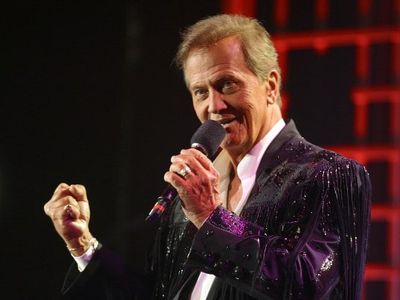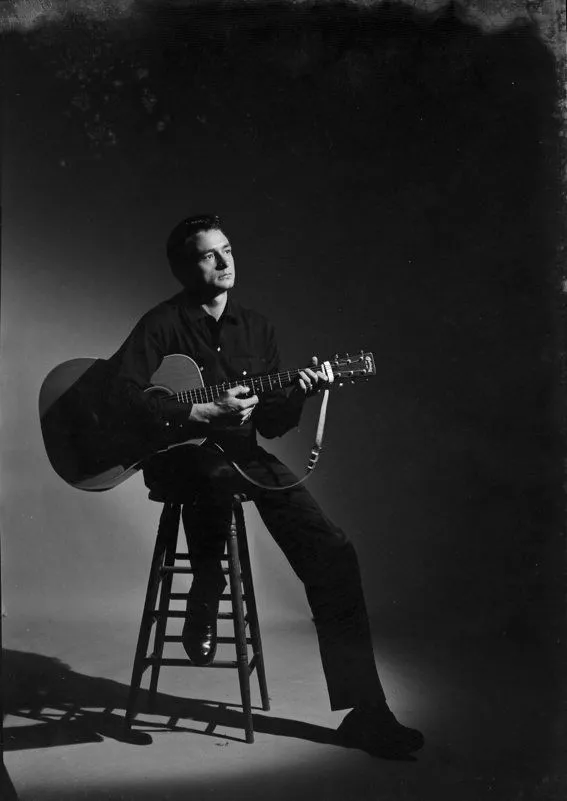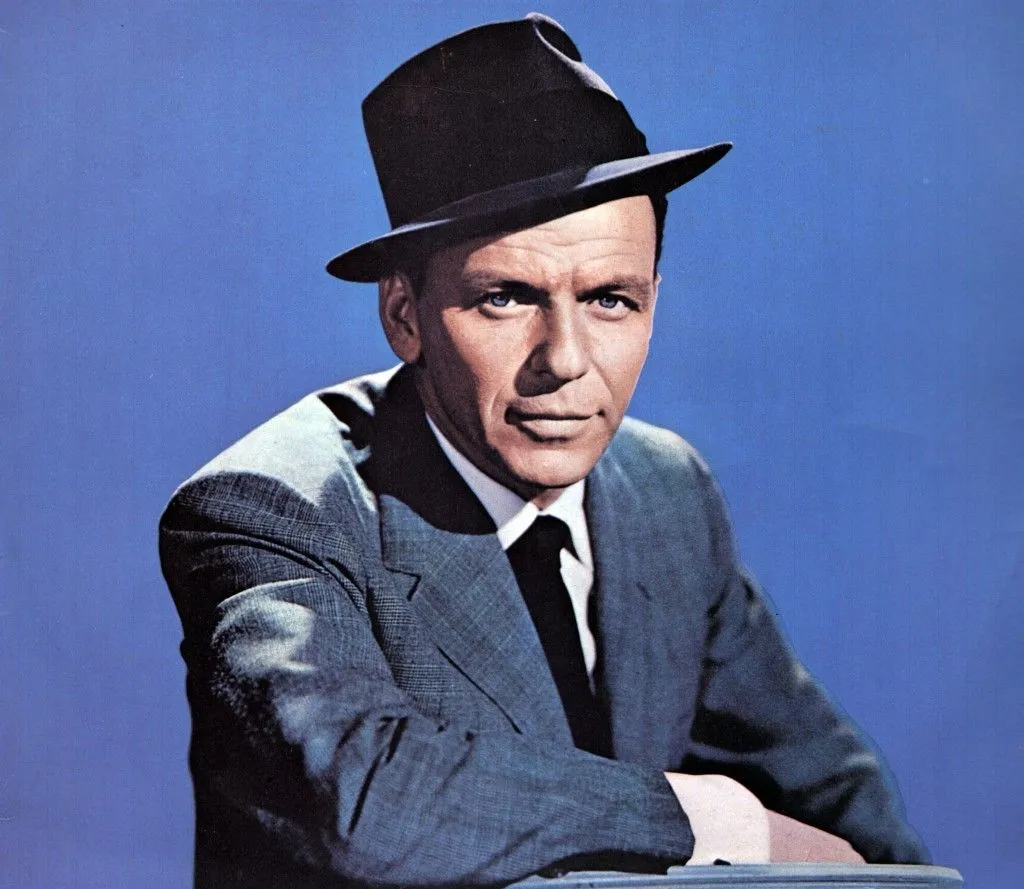Pat Boone: From DJ to famous Singer
Born on June 1, 1934 in Jacksonville, Florida. Studied at Columbia University, married Shirley, the daughter of country star Red Foley. Became the 'king of cover versions, sweetening almost every original. Regarded as the number one clean guy in the US entertainment industry (the father of four daughters refused a film role alongside Marilyn Monroe because he didn't want to kiss another woman).
In 1955, Pat Boone received a record deal from Dot Records, for which he released exactly 57 singles in the US charts until 1966, including the No. 1 hits 'I Almost Lost My Mind', 'Don't Forbid Me' (both 1956), 'Love Letters In The Sand' and 'April Love' (both 1957) as well as 'Moody River' (1961). In the late 70s, Pat Boone, host of the TV show 'The Pat Boone Chevy Showroom' from 1957-60, focused entirely on Christian music.
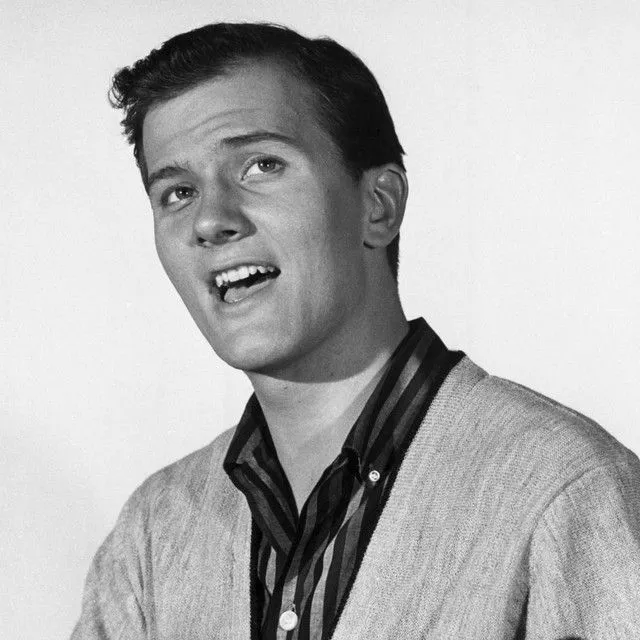
In 1997, Pat had a late hit in the U.S. with a heavy metal (!) album. His daughter Debbie had a No. 1 hit in 1977 with 'You Light Up My Life'. Boone sang six of a total of ten German-language titles in the Teldec studios in Hamburg, and the last four in February 1966 in the Saar Studios in Milan to backing tracks that had been produced in Cologne. He took on roles in US productions such as 'April Love' ('Junges Glück im April', 1957), 'Mardi Gras' ('Blaue Nächte', 1958), 'Journey To The Center Of The Earth' ('Die Reise zum Mittelpunkt der Erde', 1 1959), 'The Yellow Canary' (' - Kennwort Canary', 1963), - 'The Pigeon' ('Das Geheimnis der Puppe', 1969) and 'The Cross And The Switchblade' ('Das Kreuz und die Messerhelden', 1969).
New York disc jockey Alan Freed, unwilling to pay higher rent imposed by the managers of the Brooklyn Paramount Theater, moved his highly successful 'Rock 'n' Roll Holiday Jubilee' to the Academy of Music in Manhattan.
This gave rival disc jockey Tommy 'Dr. Jive' Smalls the opportunity to move his show from Harlem to the Brooklyn Paramount, where it opened for a week on December 23, 1955, the day after the opening of Freed's 12-day stand in midtown.
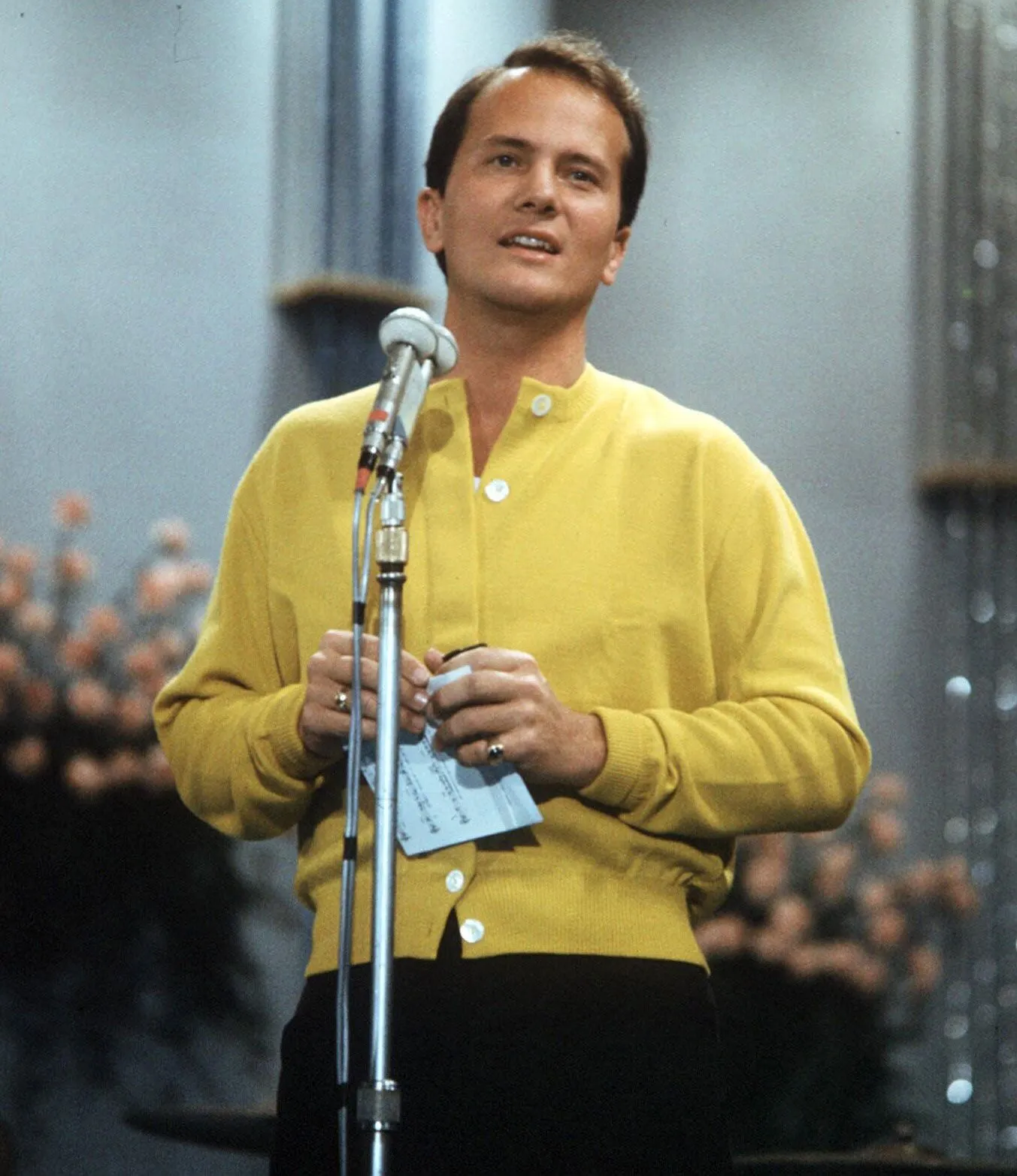
While Freed's stage shows – like his pioneering radio program – had always been integrated, this was a first for 'Dr. “Jive.” He had a strong cast of R&B performers on the show, including Bo Diddley, Clyde McPhatter, the Flamingos, the Five Keys, and the Turbans. One of the two white acts was a singing group, the Cheers, protégés of Jerry Leiber and Mike Stoller, whose hits were (then) Bazoom and Black Denim Trousers And Motorcycle Boots.
The other... well, as Ruth Brown, another of the show's stars, later said, “Pat Boone, with the white bucks on his feet, who comes home late from school.”
Brown was perhaps a little bemused by the Columbia University English Literature graduate, wearing his trademark white suede shoes, singing to a predominantly black audience, many of whom recognized him from earlier versions by black acts. Others, however, were less impressed. Many years later, Little Richard biographer Charles White wrote: “When [Little Richard's] ‘Tutti Frutti’ climbed the charts, it was covered by two white artists – Pat Boone and Elvis Presley.... This actually helped sell Richard's original version, as people who had never heard rock and roll (sic) became aware of the new sound. But in general, the policy of the 'white' record companies, covering the songs of black artists, was a cruel theft of original talent.” (While Boone's version was a cover and competed, Presley's came out later and only as an album cut).
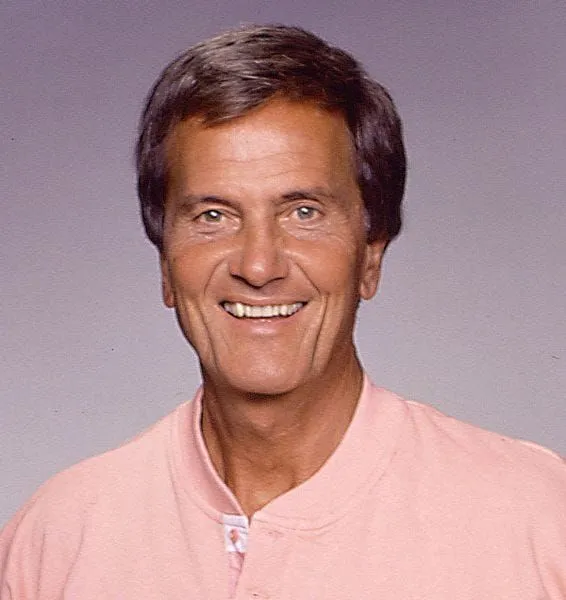
Of course, in life, nothing is that simple. Many acts, including Teresa Brewer, Gale Storm, Georgia Gibbs, the McGuire Sisters, the Diamonds, and Bill Haley, recorded their own versions of R&B hits for the white market.
As Boone himself told former Newsweek pop critic Karen Schoemer, “The revisionist idea has somehow taken hold that by covering an R&B record as a pop artist, we impeded the progress of the original artists, rather than augmented it. But in those early days, R&B music wasn't played on pop radio. It was too raw, rough, unfinished-sounding, garbled – you couldn't understand all the words. People were accustomed to big bands and polished productions. Deejays weren't willing to play it and people weren't willing to receive it. But when we made a more polished pop version of a song, it had a chance and started to catch on. People don't understand the role that the cover versions played. It was pop artists doing R&B music that put the spotlight on the original artists and opened the door.”
...And Joe Smith, “...Everyone was aware that the original artists weren't going to get played on 90% of the radio stations in America. They didn't want to play an R&B record by Chuck Berry, Fats Domino or Little Richard. In fact, the original artists hoped and prayed that their records would be covered by someone who could get airplay because it meant their records would get even more exposure in their own field. It would change later...but we were like catalysts that helped R&B become rock and roll.”
“When I first heard Boone's 'Ain't That a Shame,' I didn't like it,” Domino told biographer Rick Coleman. ‘It took two months to write, and he almost ditched it just like I did.’ It kind of hurts.”
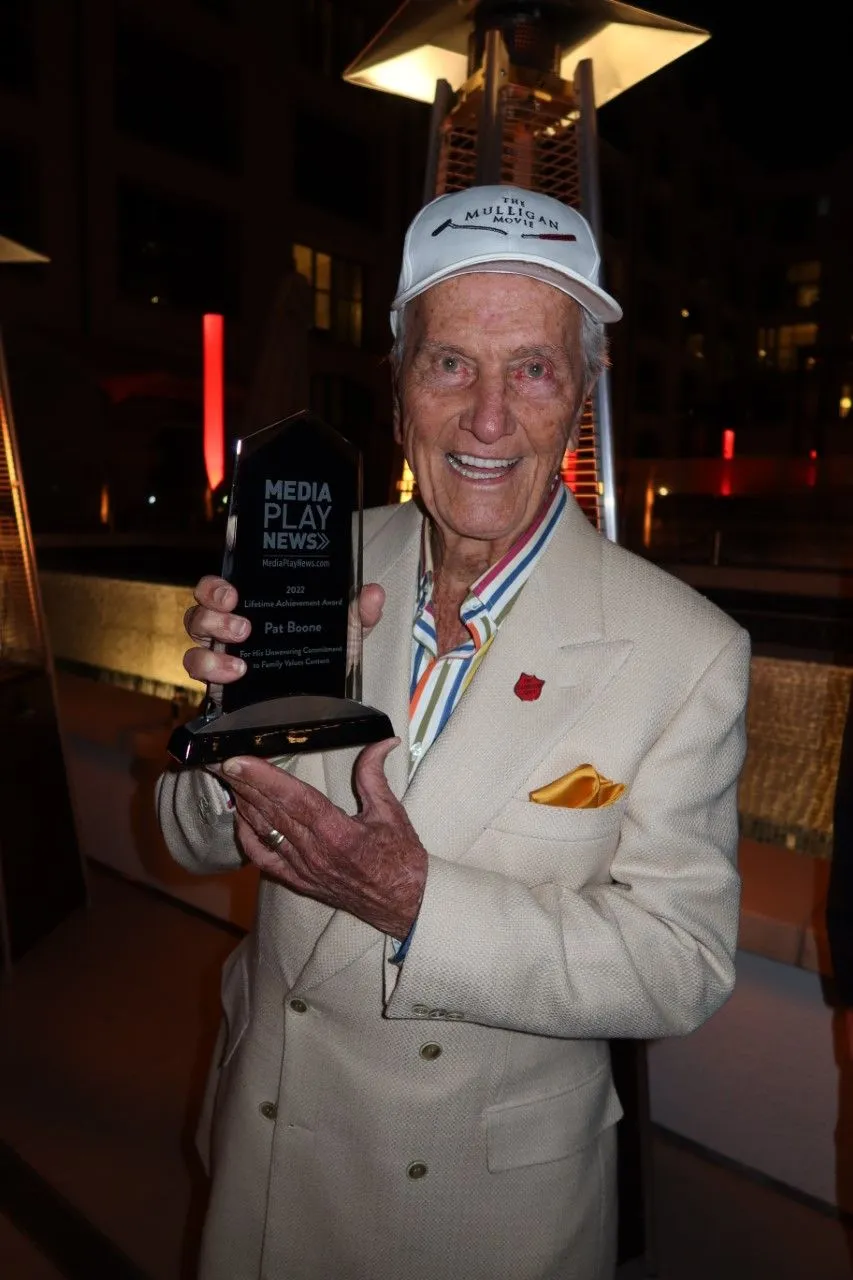
Domino, who benefited from both the writers' royalties and the indirect exposure, may have changed his mind in later years. “I went to see Domino at Al Hirt's in New Orleans,” Boone Smith recalled. “When he heard I was in the audience, he called me up on stage and said to the crowd, ‘I want you all to know something. You see this ring?’” He had a big diamond ring on each of his fingers, and he pointed to the most prominent of his diamond rings and said, “This man bought me this ring with this song.” And we sang “Ain't That A Shame” together.” Years later, Domino brought Rick Nelson on stage to duet on I'm Walkin‘, a Domino original that Nelson had brought to the top in the wake of Fats’ own version.
While no one is going to confuse a Pat Boone record with one by Little Richard, Domino, or Big Joe Turner, some of his R&B-influenced songs were legitimate hits and had their own charms. Indeed, Boone landed four singles on the Billboard R&B singles chart. Certainly, black-and-white songwriters were lining up to get the attention of either Boone or Dot Records' boss Randy Wood. And many of them succeeded.
Not every song on this compilation of Boone's up-tempo material started life as an R&B cover or revival; but all have the same vibrant spirit; that of a man who loves what he does and wants to share the fun.
And now some remarks on the most notable songs in this collection.
Born in Tennessee and educated at North Texas State College, Pat Boone appeared on local radio programs and was selected to appear on the nationally-syndicated “Ted Mack's Original Amateur Hour,” where he won three times and was invited to a special competition among multiple winners. While in New York City, he auditioned for another national program, “Arthur Godfrey's Talent Scouts.”
“On Saturday night,” Boone said in 1993, ‘I won on Ted Mack,’ qualifying for the finals, and ”on Monday I went on Arthur Godfrey and won a week's worth of performances on his daily radio show. The Ted Mack people told me I won, but they had to disqualify me.”
Pat had cut a few sides in a Tony Martin pop vein on a small, local label to no avail. But one day while visiting his parents in Tennessee, he got a call from Randy Wood. Owner of Randy's Record Shop near Gallatin, Wood also ran the Dot Records label out of his store. “Randy had been watching me for a couple of years and was convinced I could sing like a pro. He was excited, he was nice, we shook hands and he said he'd call me as soon as he found a song that suited me.”
Months went by and Boone was back in school in Texas when he finally heard from Wood. “He sent me a ticket to Chicago where I was to record a song called ‘Two Hearts’.”
An unlikely choice for Boone – whose idols (remember this was before Elvis Presley broke through) were his father-in-law, country singer Red Foley, and Bing Crosby – Two Hearts was the third hit by the Charms, a black group from Cincinnati, recorded for the Deluxe label. Another Charms hit, Hearts Of Stone, had been successfully covered by the Fontaine Sisters for the white market a few months earlier, also for Dot (another Charms hit was a black market cover of Cheers' Bazoom).
“I had never heard 'Two Hearts' before, but from the title I thought the song would be something in the waltz time as Perry Como might do.” Then Wood put on a portable record player in his hotel room and repeatedly played the bouncy R&B dance tune with a boogie beat. The arranger and conductor of Boone's version was Lew Douglas, who worked as an arranger for NBC Radio's Chicago orchestra and recorded with acts like Joni James in Chicago.
